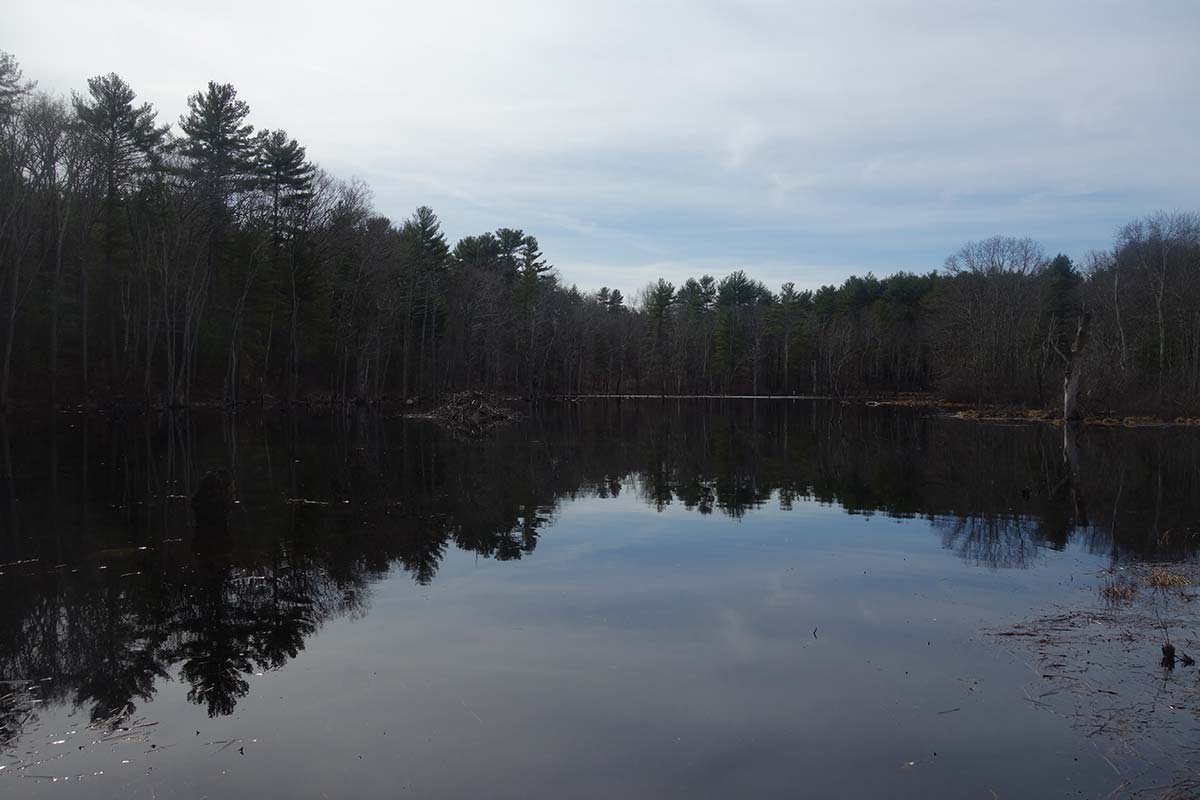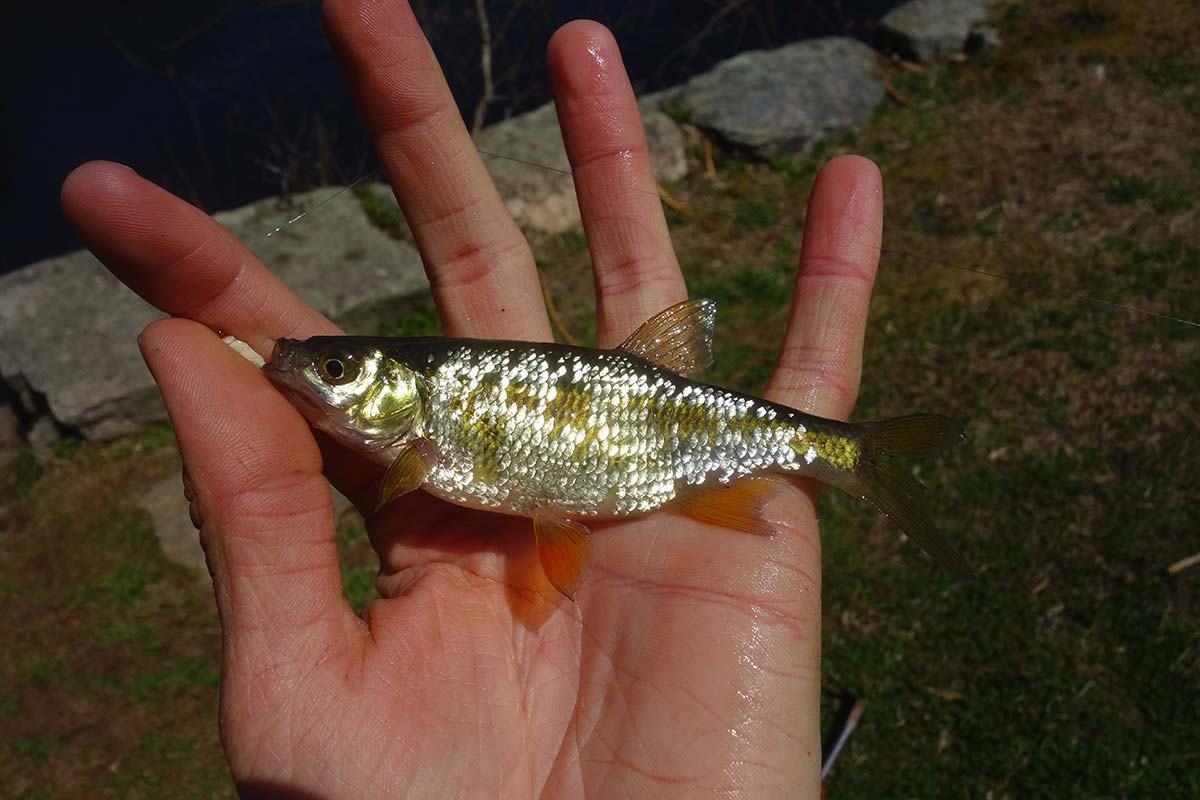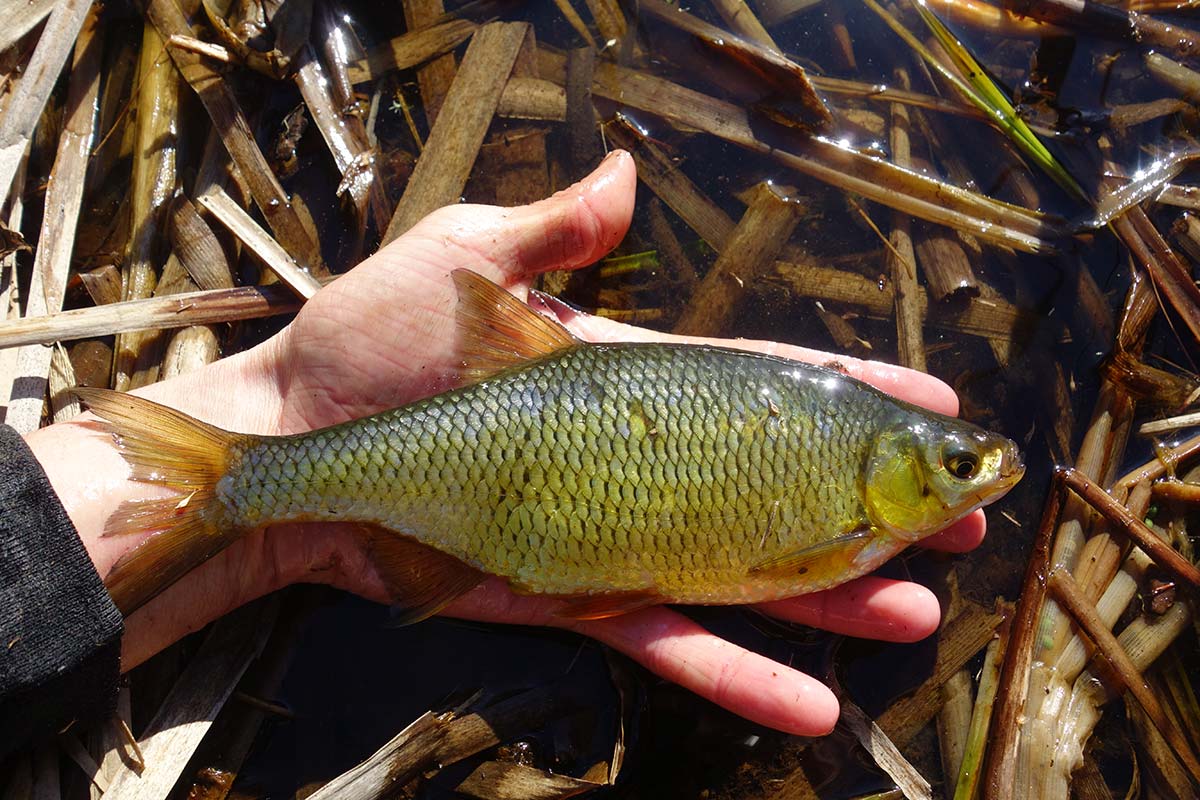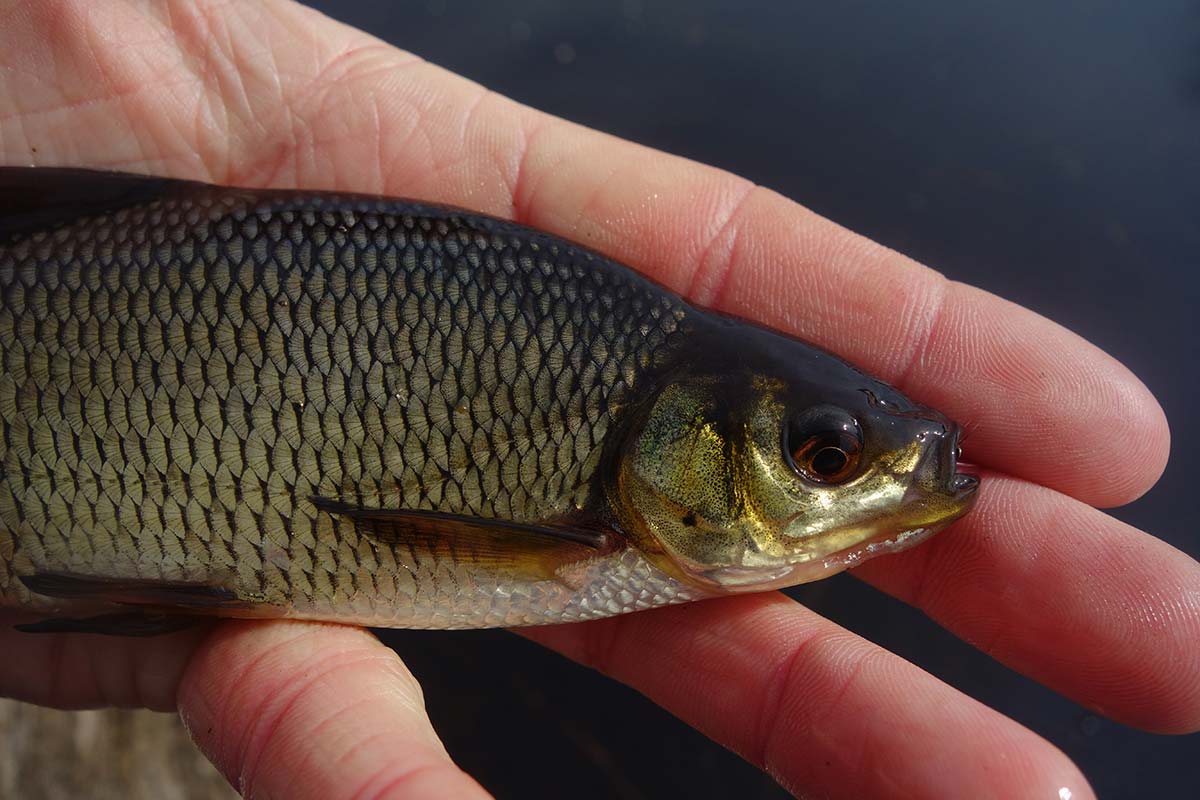
A coveted baitfish for bass and pike, golden shiners offer a unique challenge on rod and reel.
Some call them “pondies”, short for pond shiner. They’re more properly called golden shiners (notemigonus crysoleucas). The species ranges throughout eastern North America and is one of the most popular baitfish around. Their broad, reflective flanks, hardiness, and lack of spines make them a prime target for predator fish. Golden shiners can exceed 8 inches, in rare cases being as much as a foot long, but most are 3 to 7 inches. They’re readily available at just about any bait shop. They’re also readily available in waterways that could be as close as walking distance of your own home.
If you use golden shiners as bait, it might make sense – and perhaps be a lot more fun – to catch your own on hook and line. I’ve targeted golden shiners for years, often just for fun.

Golden Habitat
Golden shiners favor vegetated, shallow waters. Slow boggy creeks, beaver ponds, the backwaters of lakes, and coves off large rivers make up their natural habitat. Golden shiners can also be found in just about any small pond, though they sometimes don’t reveal themselves as readily as sunfish or other smaller species. Size and numbers can very hugely from one place to the next, affected by the number and type of predators, available cover, water quality, and size of the body of water. There’s no perfect formula, but the best golden shiner water almost always has vegetation. If they can’t hide, they get eaten. Tannic water, stained dark by the acidic chemicals that leach out of peat moss and decaying vegetation, is another good sign. Not all fish can tolerate or reproduce in highly-tannic water, but golden shiners thrive in it. After finding a suitable pond or creek, look for schools of fish lightly dimpling the surface on calm afternoons. They often feed on tiny insects emerging through the surface film. You may even see them jumping out of the water to grab small flying midges.
In the spring and late fall when most water bodies are cool in temperature, schools of golden shiners will congregate in the warmest areas of a pond. This can be an excellent time to look for them, which is convenient since these periods occur during or just before some of the seasons when golden shiners are considered a top bait. The north end of any body of water generally warms up the fastest as it gets more and longer sun exposure during spring and fall. The shallows at the north ends of ponds or wetlands are where I look first. Dark mud warms up quick in the sun, so schools of shiners will frequent shallow mud flats. Submerged brush, stumps, or fallen trees also attract them. As the water warms in the spring or cools in the fall, the schools will move a bit deeper. In larger water bodies they can be much harder to find when they make this move, but look around deeper brush piles and weed beds. In the winter I’ve had luck finding large golden shiners in the deep basins of ponds, especially those that lack larger predator fish like bass or pickerel.
In moving water, pools with a flat surface and very slow, even current produce best. If there’s a place where a stream backs up into a swamp that’ll be where the shiners are. Beaver activity is often a great sign. When the spring peepers are calling and the warm air is finally lingering into the evening in the early and mid-spring, I’ve had tremendous success paddling back through the winding stream channels through wetlands. Any time I come to a stagnant, wide section with vegetation along the edges I stop and fish. The added advantage is that these same places often hide some deep cuts where big bass hide that rarely ever see anything with a hook. Catching the shiners can translate almost immediately into a huge bass in the boat in such spots.

Keep It Light
Using very light tackle for these fish is a must. Light and ultralight rods with sensitive tips are very useful both for casting the light rigs necessary to catch these fish and to sense subtle bites. Through the ice they should be targeted with the lightest, smallest setups you have. Leader material need not be any heavier than 2-pound test. In both ice and open water situations, tiny tungsten jigs are often very effective. Golden shiners have tiny mouths and small hooks are required. Though large goldens will eat small soft plastics, my go to bait for tipping tungsten jigs is corn. Shiners love corn, it stays on the hook well, and it doesn’t impede a hookset as much as some other bait options. Small bits of nightcrawler can also work well, but it can be tough to keep bluegills off of worms. I limit using nightcrawler pieces to places I know have more goldens than anything else.
In open water, I target golden shiners with a fly rod and small unweighted wet flies. Mini Horndbergs and Leadwing Coachman work very well. When the fish are focused on insects and are rising and dimpling, small foam beetles and parachute Adams will get them. Rods in the 0- to 4-weight range are best, but I also like a longer rod rather than shorter rod. Dapping the fly under the rod tip is the occasionally the best strategy. When not dapping, golden shiners like a retrieve involving a couple short quick strips then a pause. Oftentimes they’ll take on the pause, I’ll set the hook by default with the next strip and the fish will be on. When they’re really fired up they’ll hit when the fly is moving and a gentle lift of the rod sticks them. In the early season cold water this retrieve also reduces the amount of bluegill bycatch, as they seem to prefer a bit less action.
Bycatch is perhaps the most difficult thing to navigate around when it comes to fishing goldens. Bluegills are the most obnoxious, but I’ve had days where getting through a slew of small crappies was the problem. Sometime patience is the only answer. Try to enjoy racking up a huge number of panfish while you pick through them the. The biggest shiners tend to be mixed in with other species, so it can be worth if when you’re looking for that big bait for a giant bass or pike.
If you’re having a difficult time finding your quarry, chumming may be the answer. Corn, bread crumbs, or oatmeal will often get a swarm of hungry shiners feeding right in front of you. This strategy work well both on open water and through the ice. Target the same areas previously mentioned and throw out one small handful of chum at a time. Keep it confined to a small area. The chum will often draw other species but the golden shiners will remain fairly near the surface most of the time while other species – like bullheads or carp – are down deeper. Any small, slow sinking offering should win over the feeding fish, but as more and more get pulled out of the school they’ll get pickier. Often a small gold hook in size 18 to 12 with a little bit of bread or a single corn kernel will get the most shiners. Fish this offering at rod length or under the smallest float money can buy with a single split-shot. A small float serves to detect the strikes of the small fish and disturbs them less on splashdown. Exact rigging can vary, but I usually keep the hook within a foot of the float. If the shiners seem to be intercepting the falling chum further down in the water column, of course, increasing the depth will result in more hookups. That said, I do usually find they’ll stick relatively near the surface.

Bait Considerations
Hooking and fighting goldens can be a bit of a trick at times. It is all-too-easy to tear a hook out of their soft, small mouths. When trying to fill your bait bucket with a dozen big shiners every one counts. Set the hook lightly, a simple soft lift of the rod, and fight the fish gently too. They don’t generally put up a big tussle so it feels easy to just pull hard and get them in quickly. This can result in a lot of lost fish. Apply enough pressure to keep them coming towards you but don’t try to skate them in on the surface. If you’ve got a lot of experience with crappie, American shad, weakfish, or flounder, you’ve probably already got the idea. Though golden shiners are so much smaller than those game species and aren’t going to pull back much, they’ll still shed a hook when you try to horse them in.
After you’ve got a bucket full of shiners, there’s still something very important to think about. Moving baitfish around can have consequences, so be mindful of the laws in your region. Some areas, such as northern Maine, expressly forbid the use of live baitfish. There’s a very good reason for this: a newly introduced baitfish can wreak havoc on an isolated pond or lake. Small and benign though they may seem, small baitfish have hugely impacted some isolated brook trout and arctic char ponds. Of course golden shiners are naturally present all over southern New England and have been introduced nearly everywhere they weren’t already native in the area, but it pays to be mindful. Dumping your remaining live shiners in the lake after you’re done fishing may seem like the nicest thing to do for them, but if there isn’t a population there already you could be starting a very unfortunate chain of events. Whole ponds have had to be poisoned and reclaimed to restore the natural suite of fish species after the introduction of shiners and smelt. So please do be careful with where you bring live baitfish and what you do with your extras.
There’s something quite rewarding about catching your own baitfish on a rod and reel. Perhaps it’s because the behavior of the bait is so key to catching the predator. Though catching small fish like golden shiners may seem dull and unexciting at first, in due time you’ll get the hang of it and you’ll inevitably learn more about the behavior of those fish. Some of that will likely translate into catching more pike, bass, big crappies, or whatever it is you’re going to use your shiners to catch. Of course you might end up enjoying these elegant and quirky little native fish on their own merits too. Fishing for them can be a very enjoyable change of pace.




